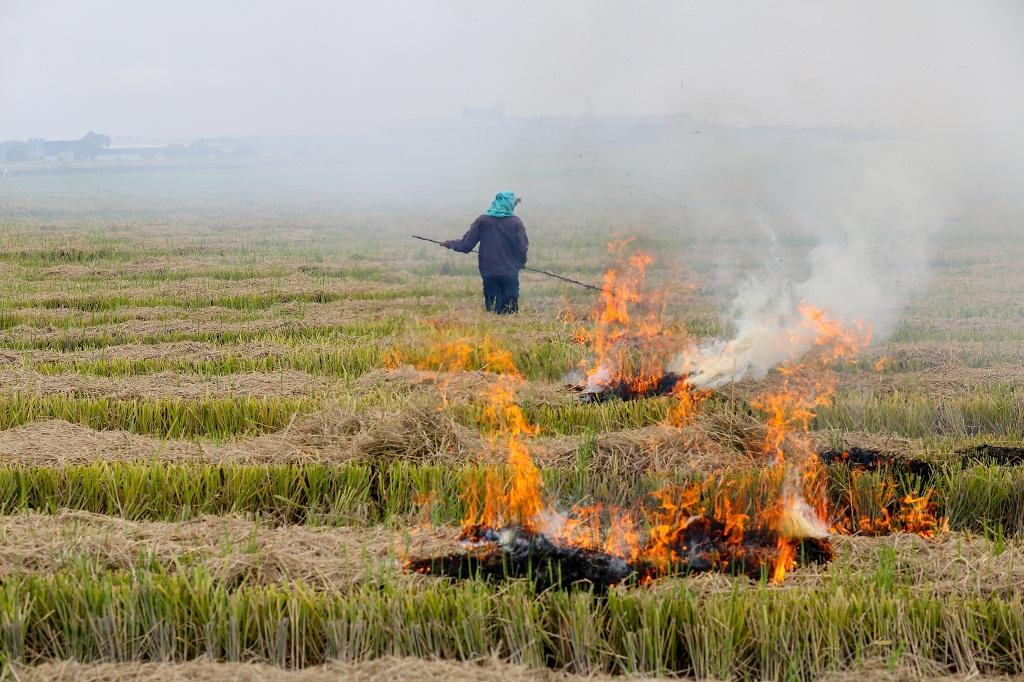

Usually, stubble clearance in these two states starts around mid-October and peaks around Diwali; but this time, extreme rains in September triggered early clearance



Stubble burning in the agrarian states of Punjab and Haryana started early this year, according to the United States National Aeronautics and Space Administration (NASA) data on fire activities.
Down To Earth (DTE) explored the data on initial trends of fire activities from September 20 to October 4, 2023, and the analysis showed there were over 2,000 fire spots in the region. However, not all of them were stubble fire.
Usually, stubble clearance in these two states starts around mid-October and peaks around Diwali, which coincides with the Kharif harvesting season.

Apart from Haryana and Punjab, Odisha and Jharkhand were the other hotspots identified by NASA’s Visible Infrared Imaging Radiometer Suite instrument onboard the Suomi National Polar-Orbiting Partnership satellite.
District-wise data suggested Dhanbad (Jharkhand) and Angul (Odisha) were the two fire hotspots in the respective states. However, fire activities here were related to mineral extraction rather than stubble burning.
DTE also analysed data for the same period for the preceding year and found stubble fire in Punjab and Haryana has been more this year compared to last year.
For the period analysed, Punjab had a total of over 550 stubble fires — a rise of over 40 per cent compared to last year. In Haryana, the increase in stubble fire has been over 300 per cent — over 200 stubble fires this year compared to just 50 last year.
DTE spoke to farmers from Amritsar, Punjab — currently the biggest stubble fire hotspot — to identify why farmers started clearing their fields so early in 2023. According to Gurbachan Singh, the early clearance this year is due to the extreme rains the state witnessed at the end of September.
“Due to loss of paddy, we want a larger window between the Kharif and Rabi season to grow vegetables hence we have started clearing our fields,” he said.
The Amritsar-Tarn Taran stretch is also known for its vegetable production. Paddy crops here saw production loss due to a flood-like situation triggered by extreme rain in September. In order to minimise their losses, farmers here are switching to vegetables before the Rabi season commences after Diwali.
DTE also asked the Punjab Pollution Control Board (PPCB) whether the fire hotspots were from stubble fire or isolated instances of fire activities. According to Krunesh Garg, chief environmental engineer, fire spots detected by satellites were indeed from stubble clearance and PPCB has taken cognisance of that.
“PPCB is aware of early fire incidents happening in Punjab, mostly in Amritsar and Tarn Taran region,” he said.
In Haryana, Kurukshetra is the biggest hotspot currently, with close to 40 instances of stubble burning.
Sahab Singh, a farmer from the district, lamented the loss of paddy due to heavy rain in September. “In some farms, it is still water logged, so there is no chance of stubble clearance, yet. The ones who had sowed short duration paddy crops of 85 days might be clearing their fields to switch to vegetables (before the Rabi season),” Singh told DTE.
Earlier, speaking to DTE, Virender Singh Lather, principal scientist with the Indian Agriculture Research Institute, had informed how the governments of Haryana and Punjab have been promoting direct sowing paddy technology with short-duration paddy varieties (PR-126, etc.) for groundwater conservation.
This short-duration variety — usually ripens in 115 days and is ready for harvesting by September, instead of October — which is the usual time period for paddy harvesting. This switch to a shorter variety of paddy could be another reason — apart from extreme rain in September — for early stubble clearance by many farmers in Punjab and Haryana.
We are a voice to you; you have been a support to us. Together we build journalism that is independent, credible and fearless. You can further help us by making a donation. This will mean a lot for our ability to bring you news, perspectives and analysis from the ground so that we can make change together.

Comments are moderated and will be published only after the site moderator’s approval. Please use a genuine email ID and provide your name. Selected comments may also be used in the ‘Letters’ section of the Down To Earth print edition.